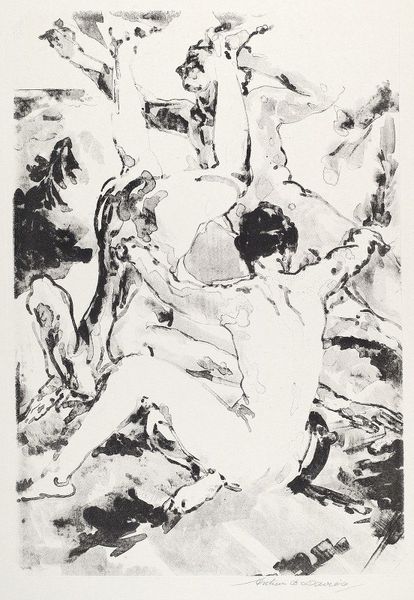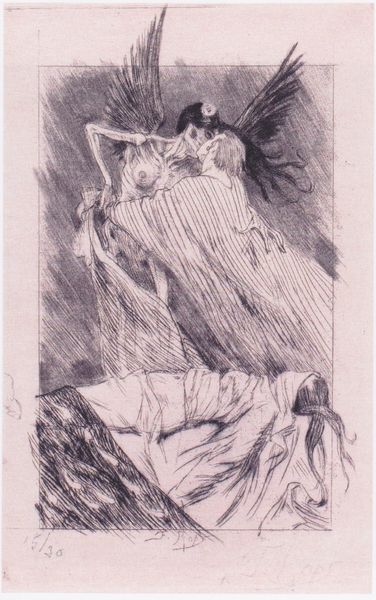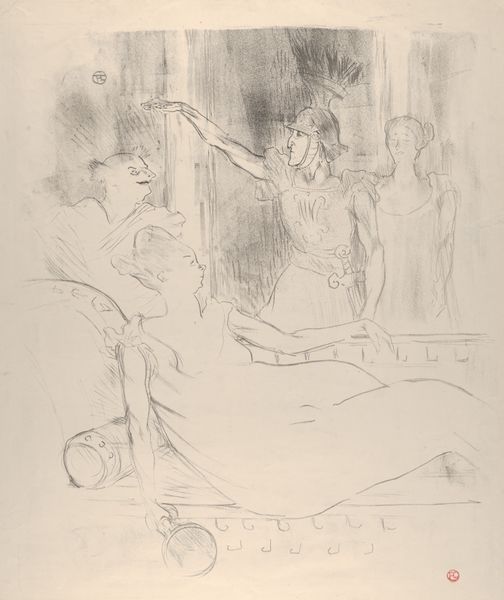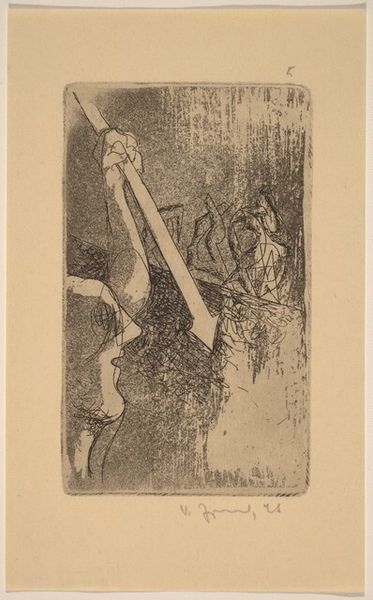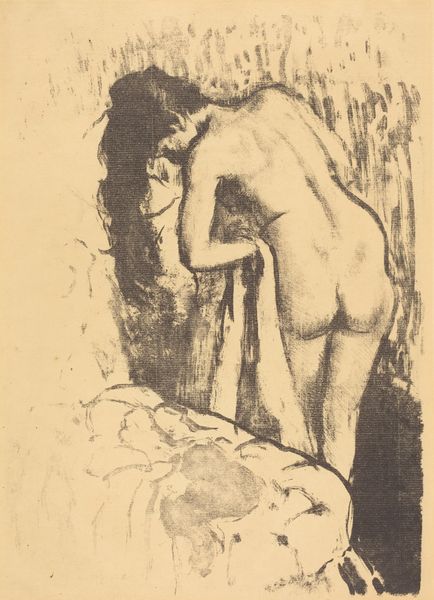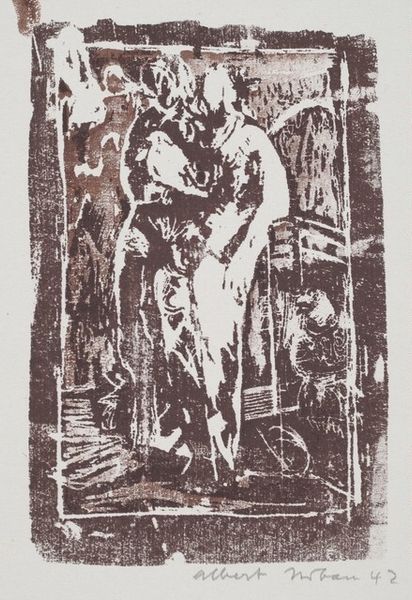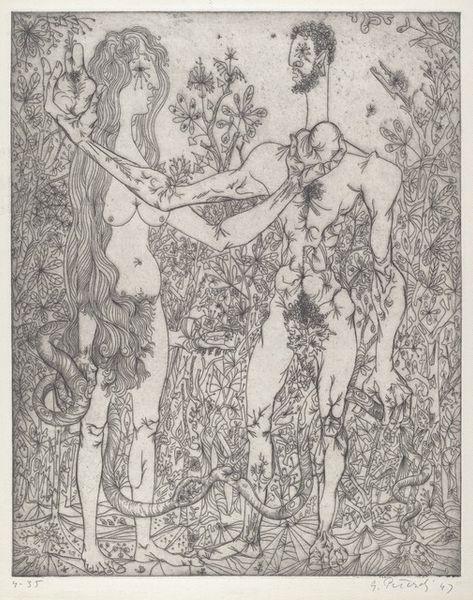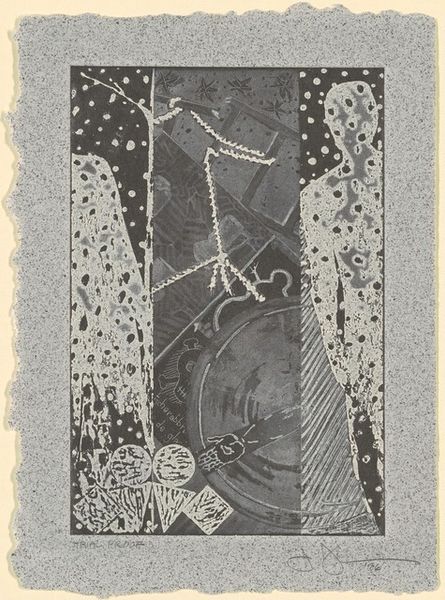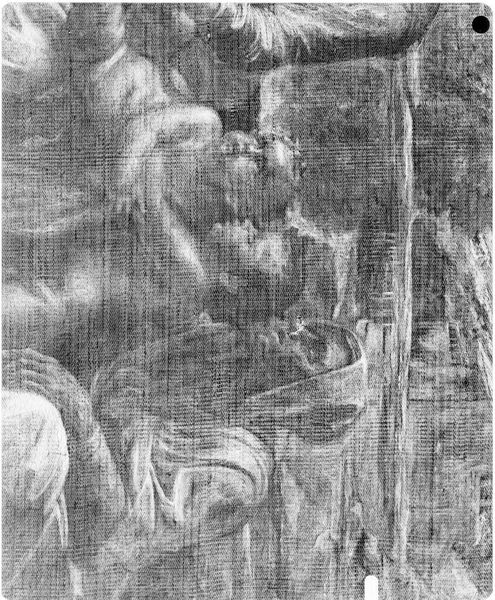
drawing, print, graphite, pen
#
drawing
#
pen drawing
# print
#
figuration
#
graphite
#
pen
#
nude
#
realism
Copyright: National Gallery of Art: CC0 1.0
Curator: Immediately, I'm struck by the almost photographic quality of the crosshatching. There's a haunting beauty in the stark blacks and whites. Editor: James McGarrell created this work, which he called "Untitled", in 1962. He employed graphite and pen to realize it. It’s both a drawing and a print. Curator: The pen work is fascinating. Look at how he achieves tonal variations, practically sculpting with ink. And there’s that tension between representation and mark-making. It almost looks like a classical nude caught in a printer malfunction. I wonder if McGarrell had particular commercial printing techniques on his mind when creating this piece? Editor: Realism certainly informs the figures here, especially in the way McGarrell depicts the female nude in the foreground and the one seated behind a railing. I’d say the pattern on the curtain suggests an interest in abstraction that counterpoints that approach. Curator: Yes, the nude figures feel grounded in the material world. It suggests something about objectification maybe, contrasting sharply against the flattened decorative background which almost feels dreamlike. Were mass-produced textiles and printed advertisements a subject in McGarrell's other works? Editor: This tension could also arise from the physical process of creating the work. It might originate with preliminary graphite sketches or photographs, later being translated into this very specific combination of drawing and print techniques. That choice itself could suggest that the artist wanted to comment on the commodification of image production that would be quite prominent at the time. Curator: It does provoke such thought. I mean, beyond technique, it gives me a lingering sense of isolation. And I wonder how much of this reading would resonate across other viewers from various sociocultural contexts, across time. Editor: I think it also reflects the era of its creation; this piece almost encapsulates early-1960s anxieties about art production, realism, and the human figure, made all the more poignant in stark monochrome. It also demonstrates how close the worlds of art and commerce have always been, perhaps now more than ever.
Comments
No comments
Be the first to comment and join the conversation on the ultimate creative platform.
